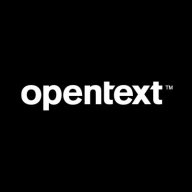

OpenText Application Quality Management and Tricentis qTest compete in the test management solutions category. Tricentis qTest appears to have the upper hand due to its flexible deployment options and positive customer feedback.
Features:OpenText focuses on end-to-end traceability and robust API integration suitable for larger organizations, offering global accessibility through its web-based platform and extensive customization. Tricentis qTest excels in high customizability with a robust integration ecosystem, flexible licensing options, and user-friendly test management that effectively accommodates automation.
Room for Improvement:OpenText grapples with high licensing costs and a complex user interface. There's a need for enhanced browser compatibility and simplified reporting. Tricentis qTest users seek improved reporting modules and a streamlined integration process for better traceability and workflow simplicity.
Ease of Deployment and Customer Service:OpenText's reliance on On-premises and Private Cloud deployments targets large enterprises but limits flexibility. Tricentis qTest offers Public and Hybrid Cloud options, ensuring adaptability. Its customer service receives generally positive feedback, unlike OpenText, which has faced criticism for inconsistent support quality.
Pricing and ROI:OpenText is often perceived as expensive, with high licensing costs posed as a barrier. Despite being robust, users find it hard to justify the cost with cheaper alternatives available. Tricentis qTest, although not cheap, offers competitive licensing models and better aligns with budget constraints, offering a balanced ROI through enhanced test efficiency and management.
It acts as an enabler for effective test and program management.
Due to the fast adoption, there is a quick ROI along with faster and better maintenance due to Tosca's AI and self-healing aspects.
Technical support has been excellent.
Quality is always high yet not perfect.
I am mostly happy with the technical support from OpenText ALM _ Quality Center.
Support has never been an issue, except for consulting which Tricentis charges for.
OpenText ALM Quality Center is definitely scalable.
From a stability standpoint, OpenText ALM Quality Center has been pretty good.
As for stability and performance, apart from a few hiccups and glitches, Tricentis qTest worked fine.
Improvements are needed so that the system can continue running without creating a new run.
I see a stable tool that remains relevant in the market.
HPLM has one of the best UIs compared to other test management tools, allowing for efficient navigation between test pieces, test folders, test suites, and test execution.
There may be missing features that should be included in the next release of Tricentis qTest, such as integration with other tools, specifically integration with Parasoft.
It also does not allow for task tracking or calculating time spent on tasks, which affects project timelines.
It would be cheaper to use a cloud model with a pay-per-use licensing model.
The solution is expensive.
The pricing and execution of qTest are easy.
It creates constant visibility into the test process, showing the status, bugs, and automated test results.
The integration with internal applications and CollabNet is made possible through exposed APIs, allowing necessary integrations.
We can create a requirement for stability metrics with the test cases to ensure all requirements are covered.
There are also AI insights available based on the data and defects raised, which gives a view of functionalities where there are challenges and where more regression needs to happen.
A valuable feature is the ease of uploading, as well as creating folders.
I have seen measurable benefits with Tricentis qTest in terms of time-saving and resource-saving.
| Product | Market Share (%) |
|---|---|
| OpenText Application Quality Management | 11.2% |
| Tricentis qTest | 12.5% |
| Other | 76.3% |


| Company Size | Count |
|---|---|
| Small Business | 39 |
| Midsize Enterprise | 32 |
| Large Enterprise | 161 |
| Company Size | Count |
|---|---|
| Small Business | 3 |
| Midsize Enterprise | 3 |
| Large Enterprise | 14 |
OpenText Application Quality Management offers centralized data management, traceability, and integration capabilities. It aids in handling requirements, test planning, and defect tracking while supporting both manual and automated testing. Challenges exist in deployment and browser compatibility.
Known for its robust reporting and flexibility, OpenText Application Quality Management is tailored for large organizations requiring a comprehensive solution supporting lifecycle coverage and seamless tool integration. Users can consolidate testing processes, manage requirements, and centralize reporting across manual and automated testing. While some face issues with project tracking, outdated interfaces, and limited browser compatibility beyond Internet Explorer, it remains widely used for regression and performance testing. Integration with tools like JIRA and support for tools such as UFT and ALM PC underscore its utility.
What are the key features of OpenText Application Quality Management?In industries such as finance and healthcare, OpenText Application Quality Management is implemented to ensure rigorous testing standards. It supports test case creation and execution, defect tracking, and requirements management. Integration with JIRA and performance testing tools make it suitable for organizations needing synchronized testing environments.
Tricentis is the global leader in enterprise continuous testing, widely credited for reinventing software testing for DevOps, cloud, and enterprise applications. The Tricentis AI-based, continuous testing platform provides a new and fundamentally different way to perform software testing. An approach that’s totally automated, fully codeless, and intelligently driven by AI. It addresses both agile development and complex enterprise apps, enabling enterprises to accelerate their digital transformation by dramatically increasing software release speed, reducing costs, and improving software quality.
We monitor all Test Management Tools reviews to prevent fraudulent reviews and keep review quality high. We do not post reviews by company employees or direct competitors. We validate each review for authenticity via cross-reference with LinkedIn, and personal follow-up with the reviewer when necessary.